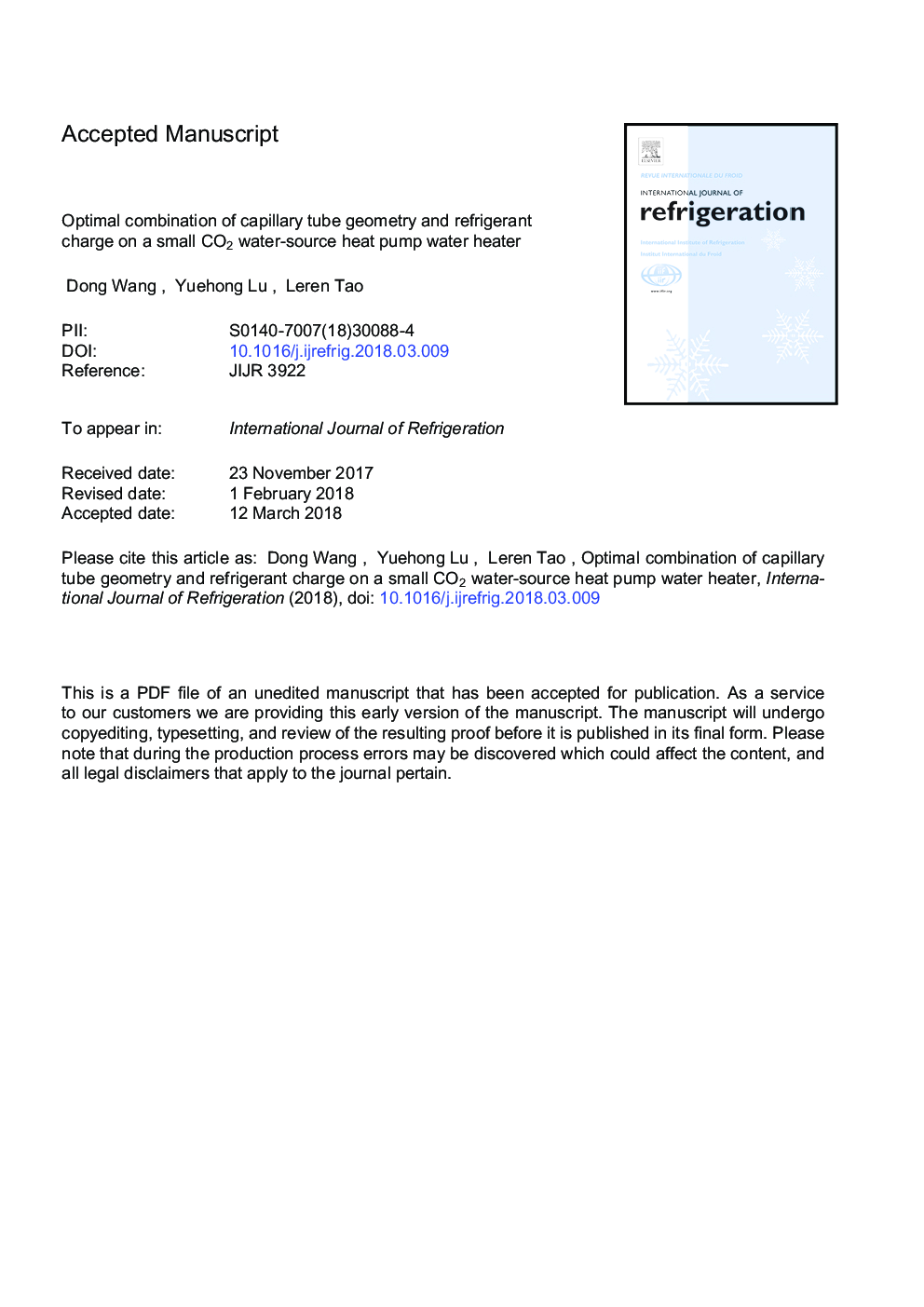| Article ID | Journal | Published Year | Pages | File Type |
|---|---|---|---|---|
| 7175349 | International Journal of Refrigeration | 2018 | 30 Pages |
Abstract
In this work, a thermodynamic model based on a small CO2 water-source heat pump water heater is proposed and discussed. The usefulness of the model lies in the possibility of selecting the best operating point for the system. Moreover, the optimal combination of capillary tube geometry and refrigerant charge can be predicted by the proposed model. In this regard, relevant experimental tests were conducted to validate the simulation results. The experiment data showed that the model had a relatively good accuracy based on the tested unit. Comparing with the simulation results, the length of capillary tube was found to be shortened by 8.77% and the optimal refrigerant charge was increased by about 5% under the specific conditions. In addition, experimental study showed that a refrigerant charge reduction of 3.7% (260â¯g) could lead to coefficient of heating performance (COPheat) reduction of about 3.1%, and 103.7% (280â¯g) charge could reduce COPheat by about 0.346%. The empirical formula method and rated operating method could be used to calculate the optimal refrigerant charge on small CO2 water-source heat pump water heater system with an error less than 5.55%.
Keywords
Related Topics
Physical Sciences and Engineering
Engineering
Mechanical Engineering
Authors
Dong Wang, Yuehong Lu, Leren Tao,
